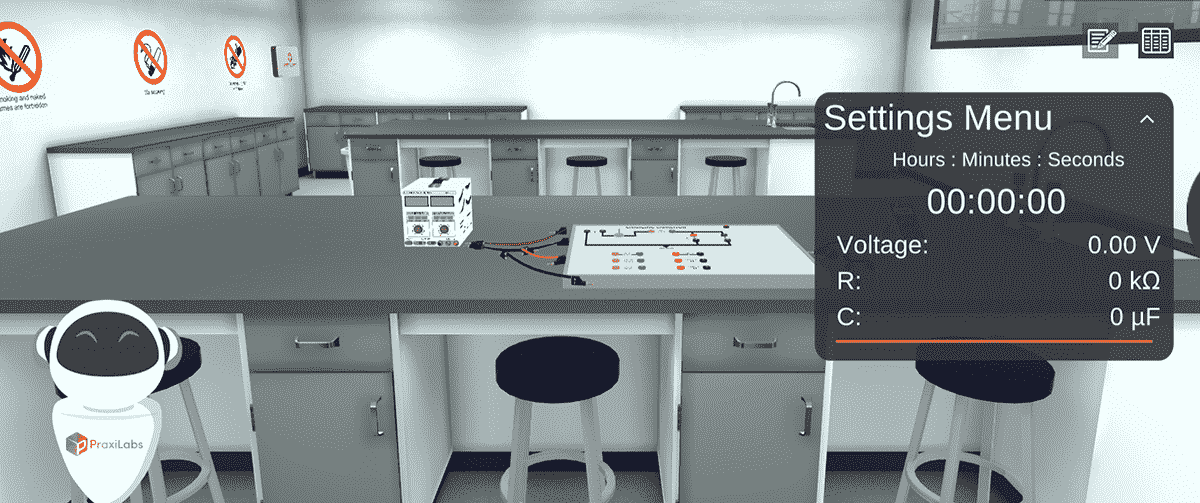





2.5M+
Active Users Worldwide
80%
Improved Learning Retention
60%
Reduction in Laboratory Costs
1- Study the variation of charging voltage of capacitor with time using Charging Capacitor Circuit Simulator
2- Determine the time constant τ in RC circuit simulation
3- Determine the experimental value of the capacitance of capacitor C.using online rc circuit simulator
4- Calculate the percentage error for the capacitance.
Charging Capacitor (increase of voltage with time) through charging simulator
By the end of the Charging Capacitor Circuit Simulator, the student should be able to:
At rc circuit simulator online, the When we turn on the battery in the charging capacitor circuit and turn off the switch key, the capacitor starts charging, with a stopwatch recording the value of volt every 10 seconds starting from zero volts until reaching its maximum voltage (V0) during the charging capacitor experiment process using rc circuit lab simulation and rc circuit virtual lab.




